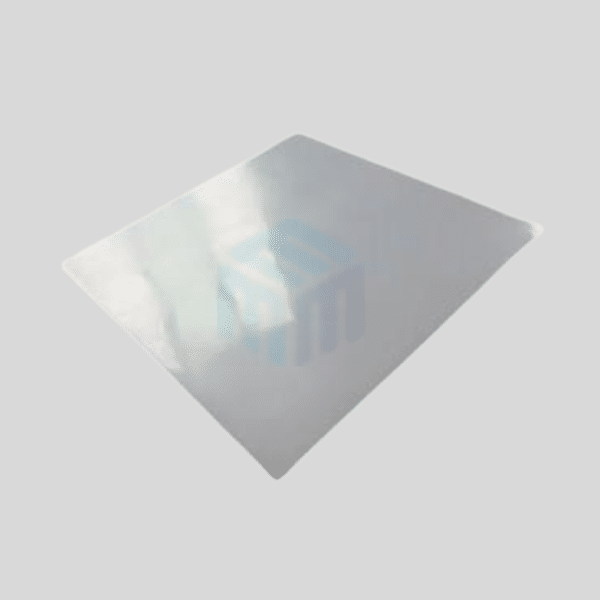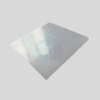Test Highly Polished Zirconia (ZrO2) Sheets
Inquiry Now| Sr No | Product Code | Description | MOQ |
|---|---|---|---|
| 1 | Qu-TbC-002-001.5-0300-00043 | Quartz Clear Tube, One End Open, Normal Cut OD 8 mm , ID 4 mm, Length 200 mm (MOQ 5 units) | 5 |
| 2 | Qu-TbC-008-004-0200-00002 | Quartz Clear Tube, Both Ends open, Fire Polished OD 40 mm, ID 35 mm, Length 1000 mm | 8 |
| 3 | Qu-TbC-008-004-0200-00003 | Quartz Clear Tube, Both Ends Open, fire polished OD 40 mm, ID 36 mm, L 700mm | 5 |
| 4 | Qu-TbO-008-006-0240-00042 | Quartz Clear Tube, Both Ends Open, fire polished OD 40 mm, ID 36 mm, L 700mm | 9 |
| 5 | Qu-Rd-010-000-0300-0019 | Quartz Clear Tube, Both Ends Open, fire polished OD 40 mm, ID 36 mm, L 700mm | 4 |
| 6 | Qu-TbO-010-007-0300-0020 | Quartz Clear Tube, Both Ends Open, fire polished OD 40 mm, ID 36 mm, L 700mm | 5 |
| 7 | Qu-TbC-010-008-0300-0024 | Quartz Clear Tube, Both Ends Open, fire polished OD 40 mm, ID 36 mm, L 700mm | 4 |
| 8 | Qu-TbO-010-008-1000-00045 | Quartz Clear Tube, Both Ends Open, fire polished OD 40 mm, ID 36 mm, L 700mm | 12 |
| 9 | Qu-TbO-012-010-1240-00013 | Quartz Clear Tube, Both Ends Open, fire polished OD 40 mm, ID 36 mm, L 700mm | 14 |
| 10 | Qu-TbC-014-010-0200-00004 | Quartz Clear Tube, Both Ends Open, fire polished OD 40 mm, ID 36 mm, L 700mm | 5 |
| 11 | Qu-TbC-015-012-0200-00010 | Quartz Clear Tube, Both Ends Open, fire polished OD 40 mm, ID 36 mm, L 700mm | 8 |
| 12 | Qu-TbO-025-020-0450-00011 | Quartz Clear Tube, Both Ends Open, fire polished OD 40 mm, ID 36 mm, L 700mm | 4 |
| 13 | Qu-TbO-025-020-0550-00012 | Quartz Clear Tube, Both Ends Open, fire polished OD 40 mm, ID 36 mm, L 700mm | 5 |
| 14 | Qu-TbO-025-022-0600-00025 | Quartz Clear Tube, Both Ends Open, fire polished OD 40 mm, ID 36 mm, L 700mm | 8 |
| 15 | Qu-TbO-035-032-0700-00026 | Quartz Clear Tube, Both Ends Open, fire polished OD 40 mm, ID 36 mm, L 700mm | 3 |
Product Description
Highly polished Zirconia (ZrO₂) sheets are advanced ceramic materials widely used in high-performance applications due to their exceptional hardness, wear resistance, chemical stability, and high-temperature resistance. These properties make zirconia an ideal choice for industries ranging from medical and aerospace to electronics and chemical processing.
Manufacturing Techniques: Polished Zirconia (ZrO₂) Sheets
- Sintering: Zirconia powders are sintered—often stabilized with yttria (Y₂O₃)—to enhance toughness through transformation toughening. This process ensures high structural integrity and performance under stress.
- Polishing: Precision techniques, including laser and mechanical polishing, are employed to achieve ultra-smooth surfaces necessary for optical, medical, and high-tech industrial applications.
Key Properties
- High fracture toughness due to the transformation toughening mechanism
- Excellent wear and corrosion resistance
- Superior thermal insulation with low thermal conductivity
- Outstanding chemical inertness
- Biocompatible, making it suitable for medical and dental applications
Technical Specifications
| Property | Specification | |
|---|---|---|
| Material | Titanium (Grades 1, 2, 5, 7, 9, 11,12) | |
| Density | 4.51 g/cm³ | |
| Tensile Strength | 240 – 1100 MPa (Depending on Grade) | |
| Corrosion Resistance | Excellent in Seawater, Acids, and Alkalis | |
| Thermal Conductivity | 17 W/m·K | |
| Available Dimension | Thickness (0.01∼0.3) x Width (<=400) x Length mm Thickness (0.3∼4.0) x Width (400∼1000) x Length (1000∼3000)mm Thickness (4.1∼60) x Width (400∼1000) x Length (1000∼3000)mm (Customization requirements can be reviewed based on customer’s drawings/ request) |
|
| Surface Finish | Pickled, Polished, Sandblasted, or Annealed | |
| Processing Methods | Rolling, Cutting, Machining |
Tolerances and Surface Finish
Zirconia sheets require precise fabrication to meet strict industry standards for dimensional accuracy and surface smoothness. Below are typical values:
Dimensional Tolerances
- General Precision (as-sintered): ±0.2 to ±0.5 mm
- Fine Precision (ground & polished): ±0.01 to ±0.05 mm
- Ultra-Precision (e.g., optical and semiconductor use): ±0.002 to ±0.005 mm
Surface Finish (Ra – Roughness Average)
- As-Sintered: Ra 1–3 μm
- Fine Ground: Ra 0.1–0.5 μm
- Polished (Mirror Finish): Ra 0.01–0.05 μm
- Ultra-Polished (Optical Grade): Ra < 0.005 μm (5 nm)
Flatness
- Standard: 10–50 μm per 100 mm
- High-Precision Applications: 5 μm per 100 mm
- Optical and Semiconductor Applications: 1–2 μm per 100 mm
Thickness Tolerance
- General: ±0.1 mm
- Precision-Machined: ±0.01–0.05 mm
- Ultra-Precision: ±0.005 mm
Parallelism
- Standard: 50–100 μm
- Precision Applications: 10–20 μm
- Ultra-Precision Applications: <5 μm
Edge & Corner Tolerances
- Chamfered Edges: ±0.1 mm (prevents chipping)
- Sharp Edge Tolerance: ±0.05 mm
Due to zirconia’s brittleness, edge processing is critical for safe handling and reliable performance.
Applications
Medical & Dental
- Crowns & Implants: High strength, aesthetic appeal, and excellent biocompatibility
- Prosthetics & Joint Replacements: Durable components for hips, knees, and dental prostheses
- Surgical Tools: Sterilization-friendly and wear-resistant instruments
Aerospace & Defense
- Thermal Barrier Coatings: Used in jet engines and rocket nozzles due to excellent heat resistance
Industrial & Laboratory Equipment
- Mechanical Seals & Bearings: Long-lasting performance in high-wear environments
- High-Temperature Furnaces & Crucibles: Suitable for metallurgy and materials research
- Cutting Tools & Grinding Media: Efficient, durable, and corrosion-resistant
- Chemical Processing Equipment: Inert to acids and alkalis, ideal for reactors and tanks
Automotive & Electric Vehicles (EVs)
- Sensors & Actuators: Precision zirconia components in fuel injection systems
- Battery Insulators: Used as heat shields and protective layers in EV batteries
Optics & Photonics
- Laser Components & Windows: Withstand high-energy applications
- Precision Mirrors & Lenses: High polish quality suitable for optical performance
Jewelry & Luxury Goods
- Synthetic Gemstones & Watch Components: Scratch-resistant and aesthetically appealing
Why Choose M-Kube Polished Zirconia Sheets?
We, at M-Kube, believe in providing Differentiating Value-Added Services like:
- Custom machining & polishing: We deliver finished, ready-to-use zirconia ceramic components tailored to your needs.
- Technical consulting: Our experts assist in selecting the right grade of zirconia ceramics for your specific applications.
- On-demand prototyping: We support R&D teams with rapid-turnaround zirconia parts for testing and validation.
At M-Kube, we offer comprehensive rough and finish grinding on various ceramic materials, by specializing in precision grinding, lapping, polishing, machining and laser cutting of these ceramic components. Our capabilities encompass surface grinding, centerless grinding, OD/ID grinding, honing, lapping, and polishing. We also maintain top notch in-house testing facilities to ensure the quality and performance of these products
We strongly recommend you to consult M-Kube team and discuss your specific requirements, including material type, desired tolerances, surface finish, and application, to ensure that we at M-Kube, can meet your exact specifications.
We, at M-Kube Enterprise, are an Australian company catering to:
– Premium quality laboratory equipment for analytical testing and sample preparation,
– Best in class laboratory consumables,
– Customized ceramic and refractory metal product solutions for high temperature applications and
– Top notch battery Equipment and battery consumables
We cater to various geographies like Australia, India, USA, Dubai, Indonesia, Malaysia, New Zealand, the Philippines, Singapore, South Korea, and Vietnam.
Our team of experts across different platforms can discuss and customize your requirements as per your needs. For more information, please reach out to us on +61 478 594 746 and we will be happy to explain the products in detail, tailor them to fit your requirements, and share detailed product catalogues.
We look forward to be one of your most trusted research and vendor partners.
- The first step includes a highly efficient 2-Stage combustion and oxidation process, whereby preliminary oxidation happens in a primary combustion tube, followed by digestion in the secondary combustion tube in presence of Pt catalyst and copper oxide.
- This is followed by a 3-Stage Dewatering process, which effectively removes water for precise analysis using an electronic condenser and drying tubes.
- Thereafter, nitrogen oxide is reduced to Nitrogen gas by the help of some effective reducing agents, which absorb the excess oxygen.
- Finally, the High-Precision Thermal Conductivity Detector (TCD) accurately measures the nitrogen that was produced in the reduction stage.
Key Properties
- High fracture toughness due to the transformation toughening mechanism
- Excellent wear and corrosion resistance
- Superior thermal insulation with low thermal conductivity
- Outstanding chemical inertness
- Biocompatible, making it suitable for medical and dental applications
Technical Specification
Working Environment
| Property | Specification | |
|---|---|---|
| Material | Titanium (Grades 1, 2, 5, 7, 9, 11,12) | |
| Density | 4.51 g/cm³ | |
| Tensile Strength | 240 – 1100 MPa (Depending on Grade) | |
| Corrosion Resistance | Excellent in Seawater, Acids, and Alkalis | |
| Thermal Conductivity | 17 W/m·K | |
| Available Dimension | Thickness (0.01∼0.3) x Width (<=400) x Length mm Thickness (0.3∼4.0) x Width (400∼1000) x Length (1000∼3000)mm Thickness (4.1∼60) x Width (400∼1000) x Length (1000∼3000)mm (Customization requirements can be reviewed based on customer’s drawings/ request) |
|
| Surface Finish | Pickled, Polished, Sandblasted, or Annealed | |
| Processing Methods | Rolling, Cutting, Machining |
| Type | Titanium |
|---|---|
| Measure | 4.51 g/cm³ |
| Air Velocity Accuracy | 240 – 1100 MPa |
| Operating Environment | 240 – 1100 MPa |
| Power Supply | 17 W/m·K |
| Dimensions | Thickness (0.01∼0.3) x Width (<=400) x Length mm |
| Weight | 150kg |
| Heating Range | 240 – 1100 MPa |
| Accuracy | 100 |
| Reading | - |
| Camera & Screen | - |
| Regulation of heating | - |
| Magnetic Stirrer | - |
| Power | - |
| Size | - |
Product Types
Tolerances and Surface Finish
Zirconia sheets require precise fabrication to meet strict industry standards for dimensional accuracy and surface smoothness. Below are typical values:
Dimensional Tolerances
- General Precision (as-sintered): ±0.2 to ±0.5 mm
- Fine Precision (ground & polished): ±0.01 to ±0.05 mm
- Ultra-Precision (e.g., optical and semiconductor use): ±0.002 to ±0.005 mm
Surface Finish (Ra – Roughness Average)
- As-Sintered: Ra 1–3 μm
- Fine Ground: Ra 0.1–0.5 μm
- Polished (Mirror Finish): Ra 0.01–0.05 μm
- Ultra-Polished (Optical Grade): Ra < 0.005 μm (5 nm)
Flatness
- Standard: 10–50 μm per 100 mm
- High-Precision Applications: 5 μm per 100 mm
- Optical and Semiconductor Applications: 1–2 μm per 100 mm
Thickness Tolerance
- General: ±0.1 mm
- Precision-Machined: ±0.01–0.05 mm
- Ultra-Precision: ±0.005 mm
Parallelism
- Standard: 50–100 μm
- Precision Applications: 10–20 μm
- Ultra-Precision Applications: <5 μm
Optional Features
The Dumas Nitrogen/Protein Analyzer is an advanced instrument for determining nitrogen and protein content in various samples through processes like high-temperature combustion, purification, reduction and thermal conductivity detection (TCD) following the standard Dumas method. With unparalleled efficiency and precision, the analyzer delivers results in under four minutes per sample, all while maintaining an environmentally friendly and safe operation process. Its intelligent design ensures seamless workflows for industries requiring fast and reliable analysis.
Tolerances and Surface Finish
Zirconia sheets require precise fabrication to meet strict industry standards for dimensional accuracy and surface smoothness. Below are typical values:
Dimensional Tolerances
- Consistent Experiment Results – Minimizing variability and enhancing reproducibility.
- Faster Heating & Cooling Cycles – Reducing downtime and increasing workflow efficiency.
- Multi-Stage Programming – Allowing automatic adjustments for complex experiments.
Product FAQ's
It is a long established fact that a reader will be distracted by the readable content of a page when looking at its layout. The point of using Lorem Ipsum is that it has a more-or-less normal distribution of letters, as opposed to using ‘Content here, content here’, making it look like readable English.
- What are the key features of this product?
- How does this product work?
- What materials is this product made from?
- What are the dimensions and weight of the product?
- Is this product available in different sizes/colors/variants?
It is a long established fact that a reader will be distracted by the readable content of a page when looking at its layout. The point of using Lorem Ipsum is that it has a more-or-less normal distribution of letters, as opposed to using ‘Content here, content here’, making it look like readable English.
Lorem Ipsum is simply dummy text of the printing and typesetting industry. Lorem Ipsum has been the industry’s standard dummy text ever since the 1500s, when an unknown printer took a galley of type and scrambled it to make a type specimen book. It has survived not only five centuries, but also the leap into electronic typesetting, remaining essentially unchanged. It was popularised in the 1960s with the release of Letraset sheets containing Lorem Ipsum passages, and more recently with desktop publishing software like Aldus PageMaker including versions of Lorem Ipsum.
- What are the key features of this product?
- How does this product work?
- What materials is this product made from?
- What are the dimensions and weight of the product?
- Is this product available in different sizes/colors/variants?







